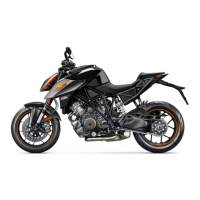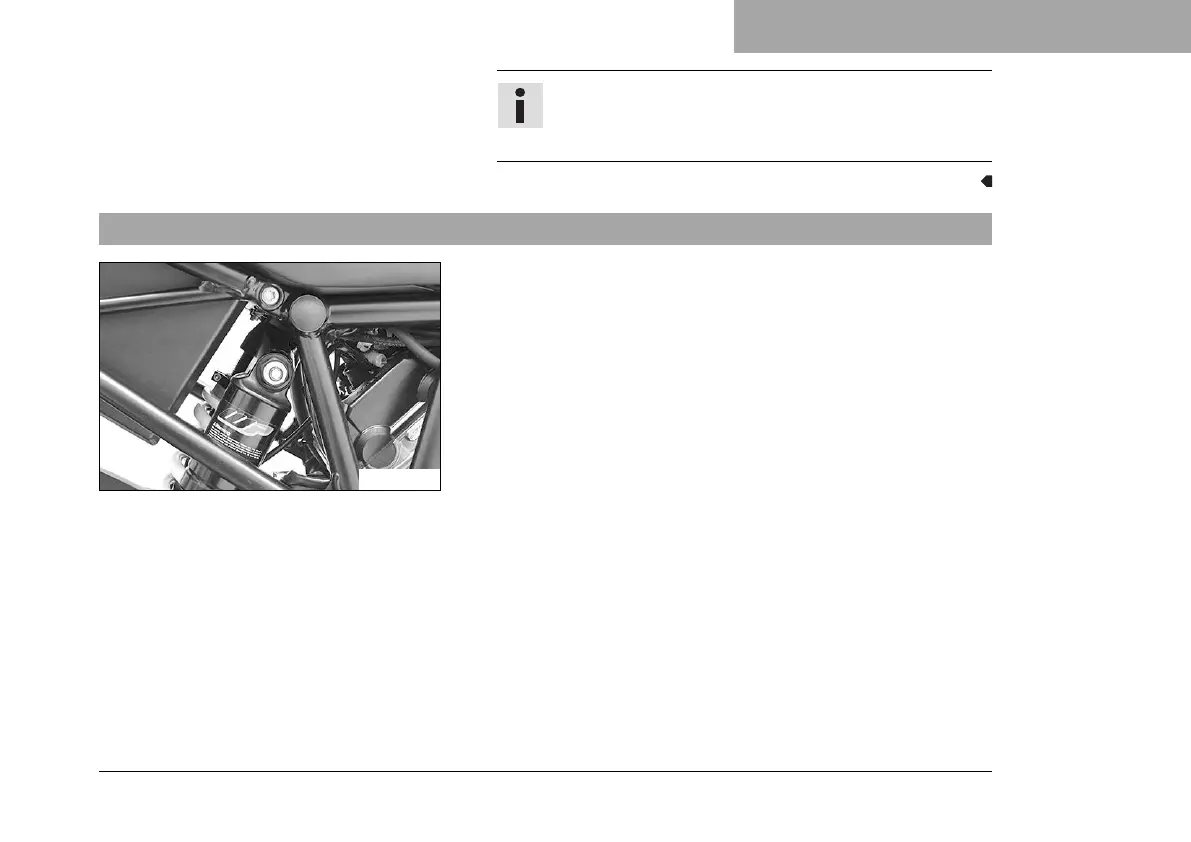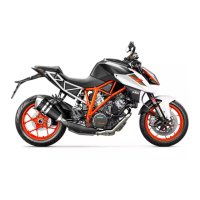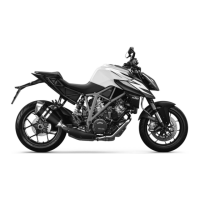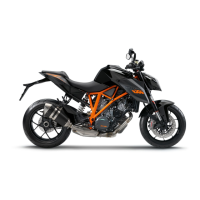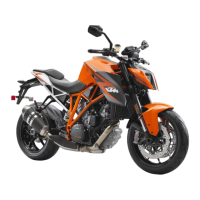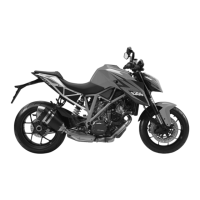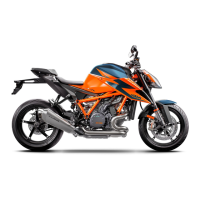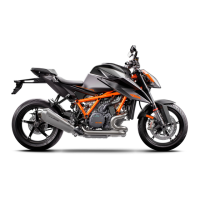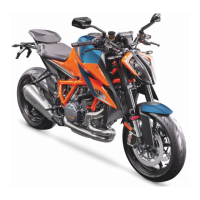SUSPENSION SETTING 12
147
Info
Turn clockwise to increase damping; turn counterclock-
wise to reduce damping.
12.4 Compression damping of the shock absorber
E00701-10
The compression damping of the shock absorber is divided into
two ranges: high-speed and low-speed.
High-speed and low-speed refer to the compression speed of the
rear wheel suspension and not to the vehicle speed.
The high-speed setting, for example, has an effect when riding
over an asphalt edge: the rear wheel suspension compresses
quickly.
The low-speed setting, for example, has an effect when riding over
long ground swells: the rear wheel suspension compresses slowly.
These two ranges can be adjusted separately, although the transi-
tion between high-speed and low-speed is gradual. Thus, changes
in the high-speed range affect the compression damping in the
low-speed range and vice versa.
